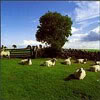- Welcome to Cook'd and Bomb'd.
-
 Fern Brady
by The Mollusk
Fern Brady
by The Mollusk
[Today at 11:37:22 AM] -
 Scotland abandons 75% 2030...
by Sebastian Cobb
Scotland abandons 75% 2030...
by Sebastian Cobb
[Today at 11:37:17 AM] -
 I'm an artist therefore I...
by Mobbd
I'm an artist therefore I...
by Mobbd
[Today at 11:34:25 AM] -
 Trans Mania: Graham Linehan...
by Kankurette
Trans Mania: Graham Linehan...
by Kankurette
[Today at 11:32:30 AM] -
 I have never listened to the...
by gilbertharding
I have never listened to the...
by gilbertharding
[Today at 11:31:52 AM] -
 Reasons why I want to obliterate...
by Kankurette
Reasons why I want to obliterate...
by Kankurette
[Today at 11:31:32 AM] -
 Load of horses gone mental...
by imitationleather
Load of horses gone mental...
by imitationleather
[Today at 11:30:24 AM] -
 American words/phrases you...
by gilbertharding
American words/phrases you...
by gilbertharding
[Today at 11:29:47 AM] -
 Wrasslin' Talk: Punk out
by Ja'moke
Wrasslin' Talk: Punk out
by Ja'moke
[Today at 11:29:15 AM] -
 Doctor Who - Series 14, part...
by Ambient Sheep
Doctor Who - Series 14, part...
by Ambient Sheep
[Today at 11:28:32 AM]
Members
 Total Members: 17,827
Total Members: 17,827 Latest: skinnylike
Latest: skinnylike
Stats
 Total Posts: 5,583,576
Total Posts: 5,583,576 Total Topics: 106,745
Total Topics: 106,745 Online Today: 1,104
Online Today: 1,104 Online Ever: 3,311
Online Ever: 3,311- (July 08, 2021, 03:14:41 AM)
Users Online
 Users: 96
Users: 96 Guests: 806
Guests: 806 Total: 902
Total: 902 Pranet
Pranet Butchers Blind
Butchers Blind mrsleepy321
mrsleepy321 Registering to lurk
Registering to lurk non capisco
non capisco hcrumble
hcrumble ajsmith2
ajsmith2 lebowskibukowski
lebowskibukowski gib
gib SteveDave
SteveDave Kankurette
Kankurette Mixmaster Flibble
Mixmaster Flibble gilbertharding
gilbertharding TommyTurnips
TommyTurnips andyneal2005
andyneal2005 Matthew Dawkins Jub Jub
Matthew Dawkins Jub Jub dissolute ocelot
dissolute ocelot Pixel Pusher
Pixel Pusher Stoneage Dinosaurs
Stoneage Dinosaurs Huxleys Babkins
Huxleys Babkins Sonny_Jim
Sonny_Jim KaraokeDragon
KaraokeDragon Phoenix Lazarus
Phoenix Lazarus pcsjwgm
pcsjwgm robhug
robhug Alberon
Alberon ros vulgaris
ros vulgaris lankyguy95
lankyguy95 Mr Balowski
Mr Balowski Mobbd
Mobbd Chudraa
Chudraa JaDanketies
JaDanketies MojoJojo
MojoJojo Ja'moke
Ja'moke Auntie Beryl
Auntie Beryl Shaxberd
Shaxberd Chairman Yang
Chairman Yang Mr Padgett
Mr Padgett Spoon of Ploff
Spoon of Ploff checkoutgirl
checkoutgirl privatefriend
privatefriend edwardfog
edwardfog Benga Zara
Benga Zara batwings
batwings poloniusmonk
poloniusmonk Dr Marbles
Dr Marbles Theoretical Dentist
Theoretical Dentist DreadedScotsman
DreadedScotsman notcherhorowitz
notcherhorowitz brebsy
brebsy Blumf
Blumf Bartholomew J Krishna
Bartholomew J Krishna Sad Ken
Sad Ken StupidSexyPerro
StupidSexyPerro Bunty Levert
Bunty Levert Cleveland Steamer
Cleveland Steamer Ruben Remus
Ruben Remus Holy Dread
Holy Dread Buelligan
Buelligan RFT
RFT mash
mash Theotherside
Theotherside Bellalunaesme2
Bellalunaesme2 Old Thrashbarg
Old Thrashbarg Uncle TechTip
Uncle TechTip Psybro
Psybro George White
George White Thursday
Thursday Ronnie the Raincoat
Ronnie the Raincoat Magnum Valentino
Magnum Valentino Underturd
Underturd Wezzo
Wezzo Buffalo Many Times
Buffalo Many Times Pink Gregory
Pink Gregory frajer
frajer Urinal Cake
Urinal Cake
